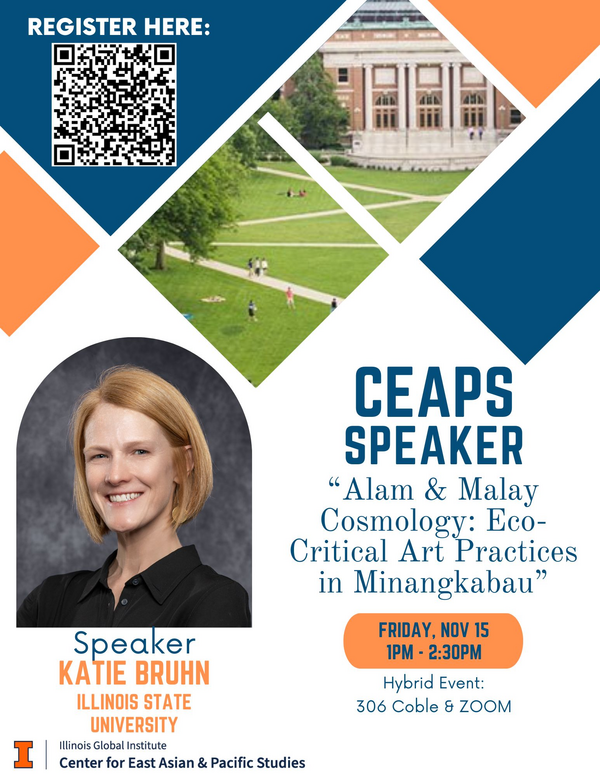
CEAPS Speaker | Katie Bruhn (ISU) "Alam & Malay Cosmology: Eco-Critical Art Practices in Minangkabau"
- Event Type
- Lecture
- Sponsor
- Center for East Asian & Pacific Studies
- Location
- 306 Coble Hall, 801 S Wright St, Champaign
- Date
- Nov 15, 2024 1:00 pm
- Registration
- Registration
- Contact
- Alex Chun
- park387@illinois.edu
- Views
- 230
- Originating Calendar
- CEAPS Events Calendar
About the Speaker:
Katherine Bruhn is Assistant Professor of Global Art and Visual Culture at Illinois State University. She specializes in Southeast Asian modern and contemporary art with a geographic focus on Indonesia. She is currently working on a book that examines the intersection of native epistemes and contemporary art in Southeast Asia through an investigation of how cosmological thinking and ecological knowledge informs the work of artists associated with the Minangkabau ethnic group of Indonesia. She received her PhD from UC Berkeley in Southeast Asian Studies.About the Talk:
In Minangkabau, the ethnic group that is synonymous with the Indonesian province of West Sumatra, “alam” holds unparalleled significant. It is not only looked to as a place of birth and death, but also a place to live and grow that contains philosophical meaning. From Arabic, in modern Indonesian, alam is translated variously as “nature,” “universe,” and “realms of perception.” In this presentation, I will examine how alam has shaped Minangkabau cosmology through a consideration of the relationship of alam to the work of artists and artisans associated with this group. I will draw a connection between what historically, was the visual translation of Minangkabau proverbial speech into motifs found on traditional textiles and architectural forms, and the work of Minangkabau born contemporary artist Handiwirman Saputra (b. 1975). In the last decade, Saputra has increasingly gravitated towards issues that demonstrate a connection to the environment. In positioning Saputra’s work as reflective of trends in the growth of eco-critical art practices globally, I will ask, how does an engagement with alam specifically and cosmologies associated with the Malay world more generally, contribute to an understanding of non-Western eco-critical art practices?